Monstera are one of the most popular indoor plants today, and for good reason. They are an attractive, low-maintenance tropical plant that looks great in any space. Our monsters are still short and bushy, but they climb and can grow tall and tree-like. Here’s why we chose this simple plant for our home.
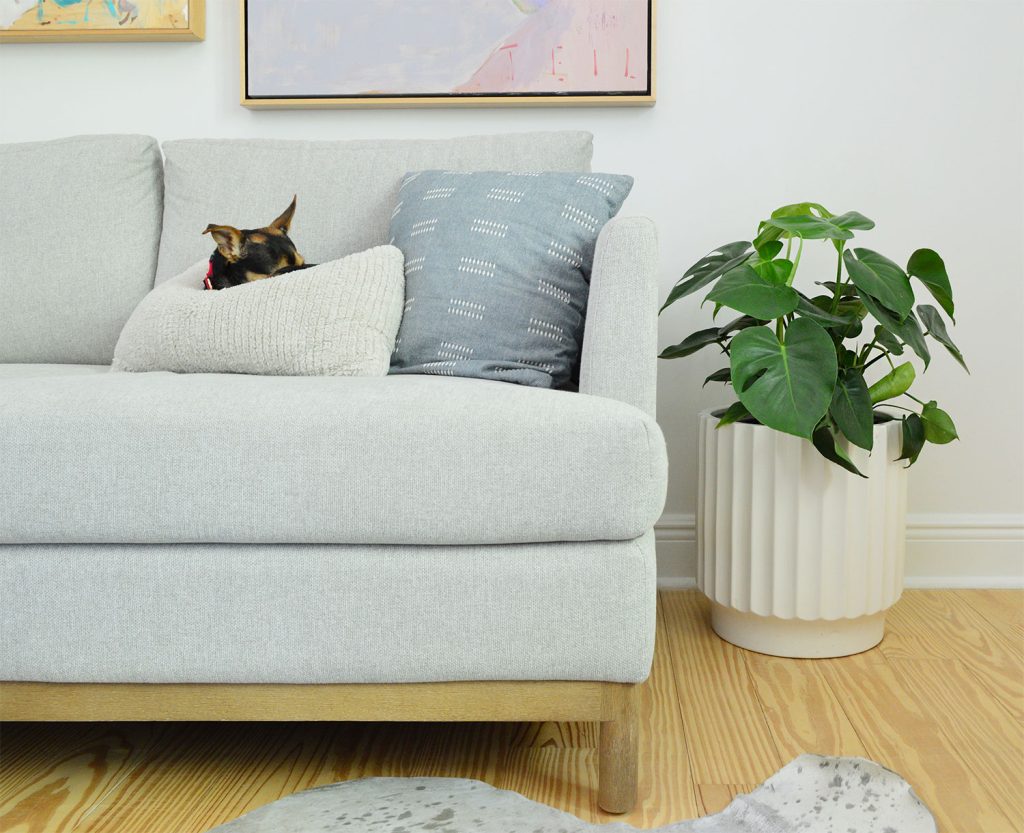
Rod monster includes over 50 different species of plants, best known for their large “monster” leaves with distinct holes and split edges. Today we will talk about the most popular variety of monstera indoor plants: o Monstera Deliciosa.
What is Monstera Deliciosa?
The monsters are native to the tropical areas of Central America, especially Mexico. Their large, clear leaves are a natural adaptation for survival in the rainforest. Clefts and holes in the leaves (called “fenestrations”) allow the plant to grow without becoming too heavy, while allowing sunlight and rain to reach the lower parts of the plant.
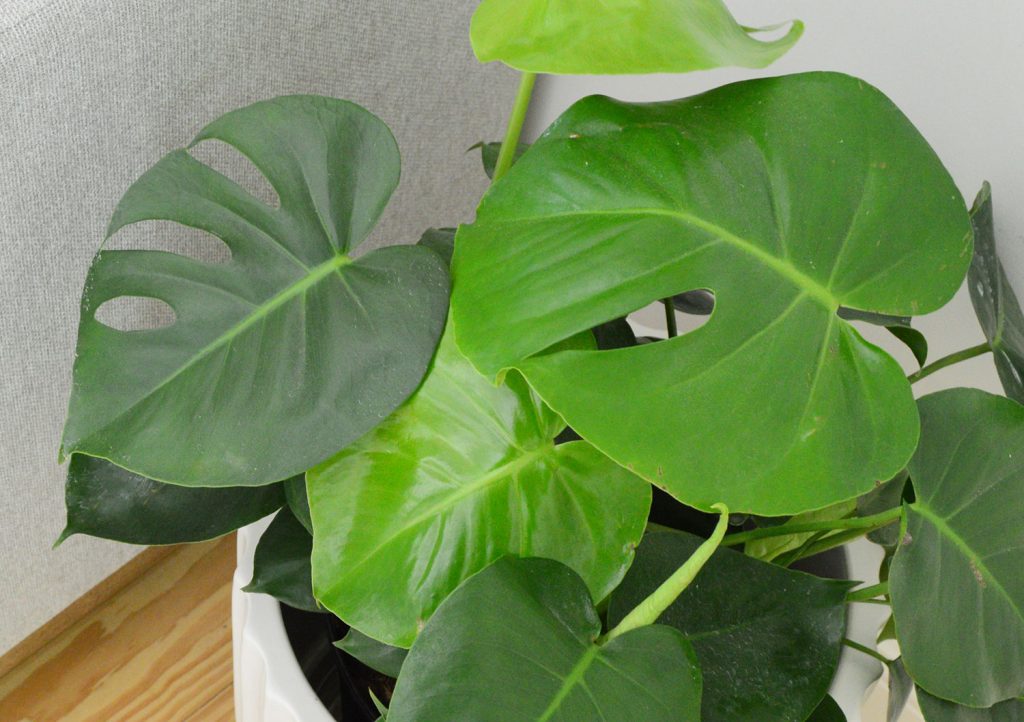
In the wild, monstera plants also produce delicious fruit (hence the “deliciosa” part of its name), but they rarely produce fruit as houseplants. Also considered an epiphyte, these are plants that grow on or alongside other plants, such as trees, without harming their host. Pothos is another popular epiphytic houseplant. That’s why many people use stakes to give their monsters something to climb on.
Monstera Deliciosa vs Split Leaf Philodendron
Monstera deliciosas are also called “Swiss cheese plants” or “split-leaf philodendrons”. However, monstera is not a philodendron and that name can cause it to be confused with Tree Philodendron. These are two completely different indoor plants that are often sold under the name Split Leaf Philodendron. As you can see below, monstera leaves tend to be shinier and less wrinkled along the edges.
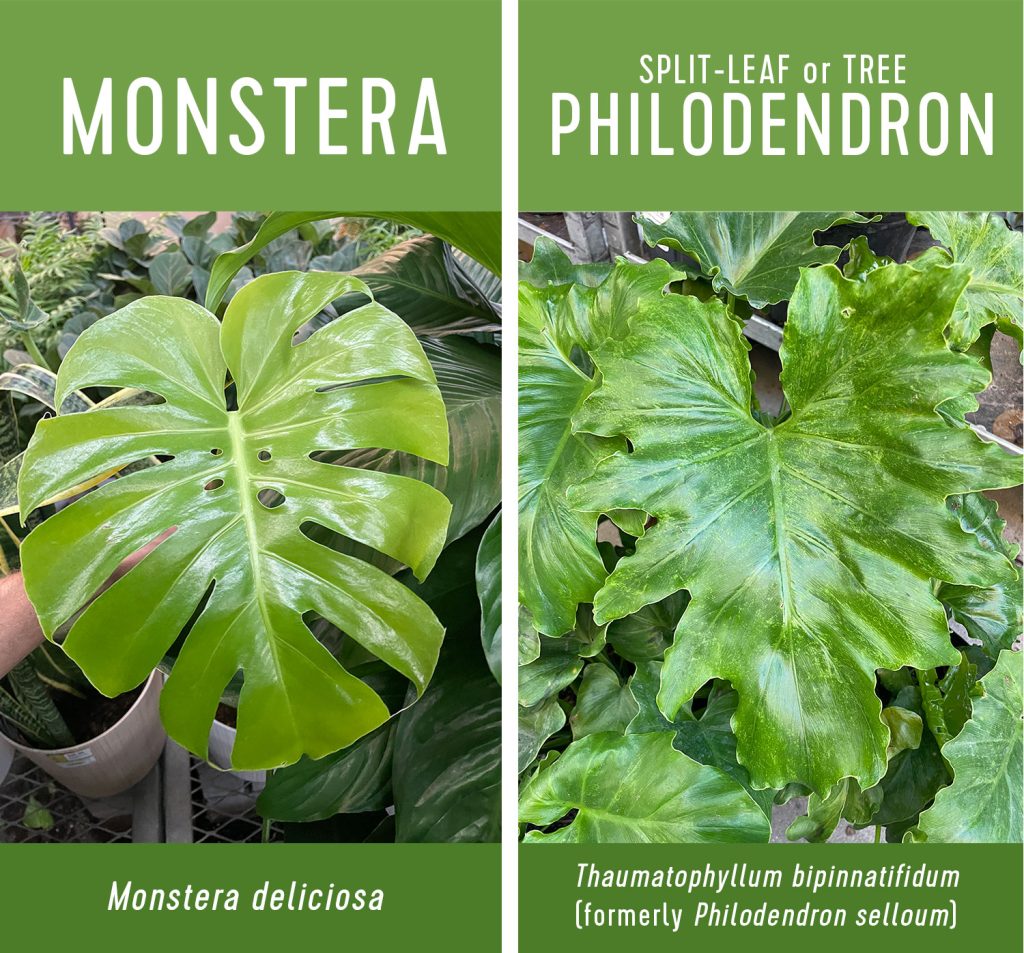
These visual differences may be less obvious with younger or smaller plants, so we recommend double-checking the label or list for the plant’s scientific name. That way you’ll get the “Split Leaf Philodendron” you’ve been wanting!
How to care for Monstera Deliciosa
We have no patience for fussy or difficult houseplants, which is why we love having monsters! They are easy to care for and grow relatively quickly, making them a useful plant.
Light and setup
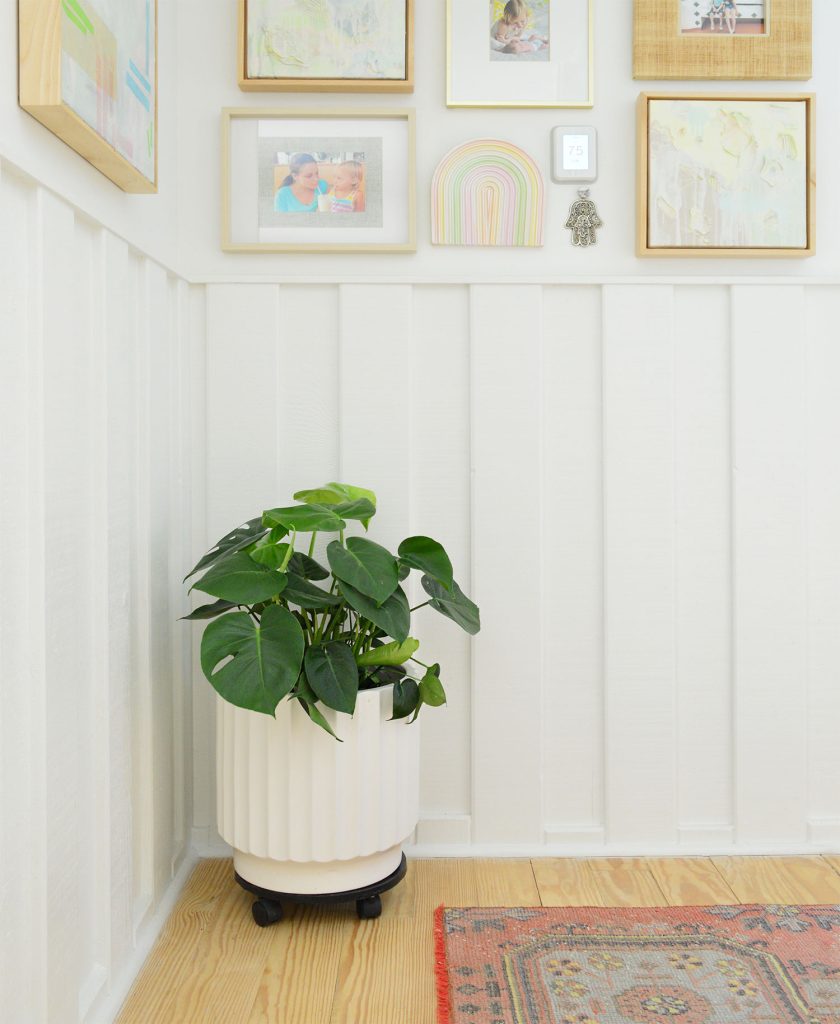
Monsters prefer medium indirectly sunlight, but can adapt to a range of lighting situations. Just avoid direct sunlight as it can burn the leaves. We have one thriving in a hallway with relatively low light, but you may want a location with partial or dappled sunlight if you’re trying to encourage faster growth.
Watering your monstera
Monsteras usually only need watering every 1-2 weeks during the growing season (spring and summer). Being rainforest plants, the monsters are used to dry periods between heavy rains. So don’t worry if your soil dries out completely between waterings. In autumn and winter, you can space the watering even further.
Humidity & Fog
Monsters love moisture, thanks to their tropical origins. Indoor humidity of 50-60% is ideal, meaning it will perform well in most home environments. You can always keep it near a portable humidifier or lightly mist the foliage between waterings to encourage growth.
Cleaning Leaves
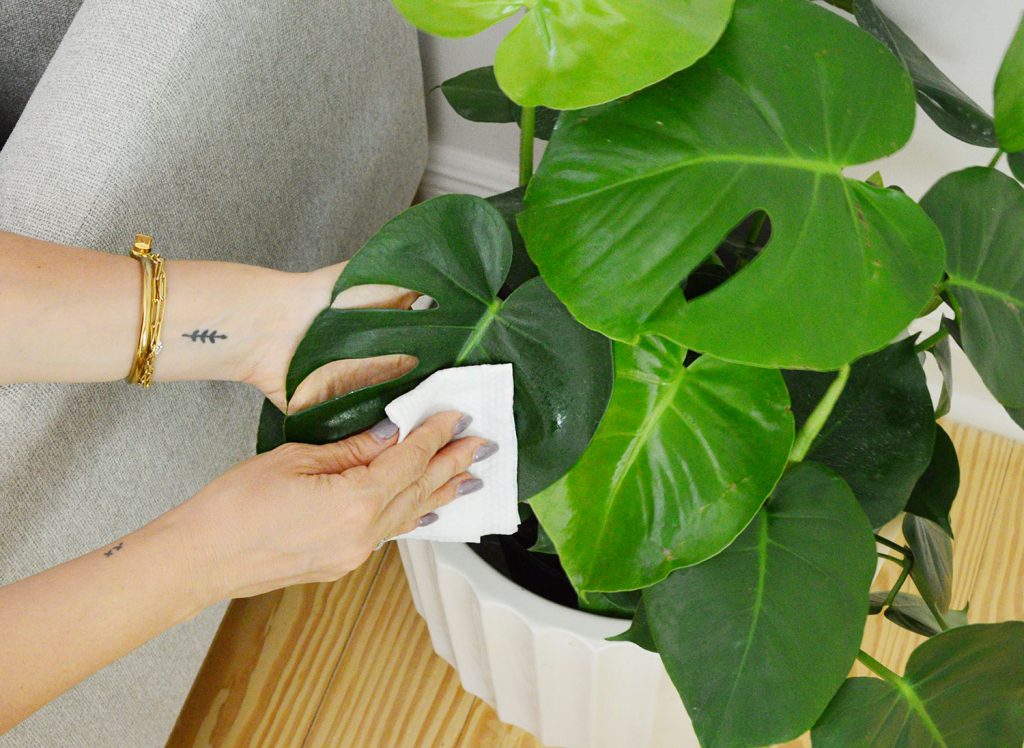
Consider wiping or wiping monster leaves with a damp cloth as needed. This helps it look its best while allowing more sunlight to reach its surface. You can also buy herbal wipes or spray to really shine!
Transplanting monstera
Your monstera will probably outgrow its pot every 1-2 years. Consider repotting in a larger, well-drained pot with fresh potting soil to encourage continued growth. If you want to reuse the same spot, use this time to prune back growth, remove dead roots and provide your plant with fresh, nutrient-filled soil.
Staking a Monster
Since monsters are natural climbers, you can introduce a plant to encourage upward growth. Stakes are sold in different sizes, shapes and materials. Just be sure to choose one that matches the size and weight of your plant. Use it plant ribbons or ties to attach it to the stake.
Common problems
Monstera deliciosa plants are easy to care for, but don’t be surprised if you encounter one of these common problems. Fortunately, they are easy to spot and easy to deal with.
- Brown tips: Your monster gets too much sun, causing the leaves to burn. Move to a new location with softer, more indirect light.
- Yellow leaves: You are over watering your monstera. Allow the soil to dry out completely and allow more time between waterings. You can always check the soil before adding water. If it is still wet, wait longer to water.
- Pests: If you notice small pests, webs, or damage on monstera leaves, you may have common pests such as sap-sucking mealybugs, aphids, scale insects, spider mites, or more. Remove pests with a damp cloth and apply neem oil to the base of the plant.
Other frequently asked questions about Monstera Deliciosa
Are monsteras poisonous to cats?
Monstera leaves are poisonous to cats, dogs and humans if ingested. It is safest to keep them out of the reach of small children or pets who like to nibble on your houseplants. Fortunately, our dog has no interest in our plants.
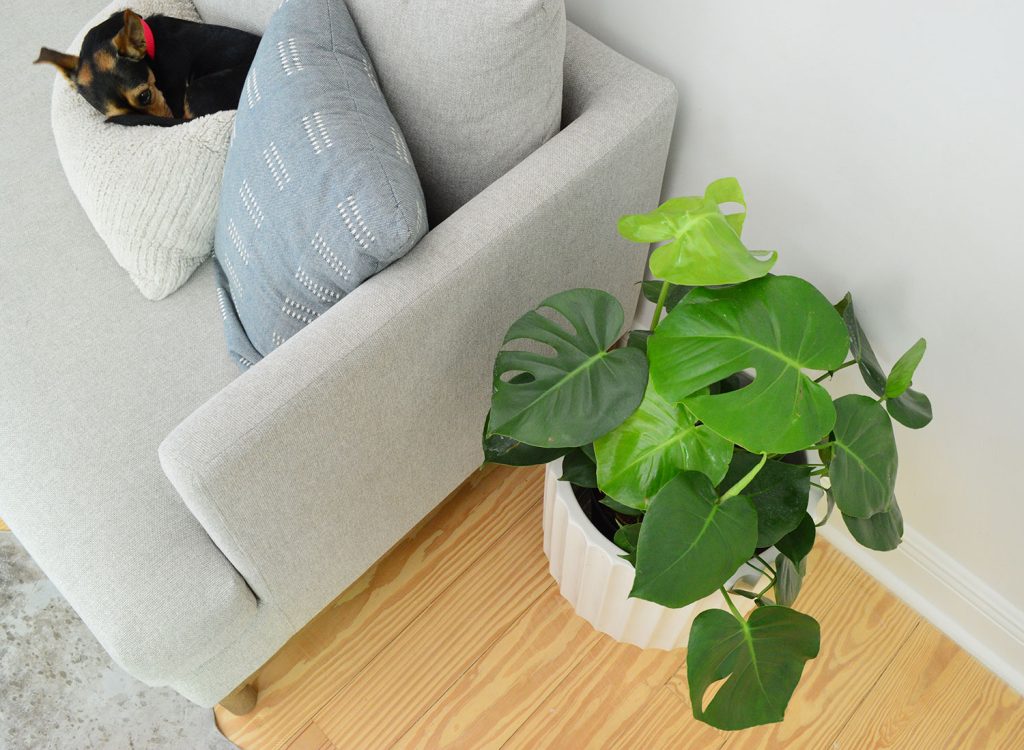
Can you breed a monstera?
Monstera are excellent plants for propagation. Use clean, sharp scissors to cut off a mature leaf or stem just below its node (where the leaf stem or aerial root meets the stem). After the cut has dried for a few minutes, submerge the cut end in water in a clear container. Place the container in a bright place and change the water every week. You can even put several cuttings in the same vase for a decorative arrangement or centerpiece. You should see new roots within a few weeks, and after a few months you can transfer the roots to a pot of soil.
Can I grow monstera outdoors?
Monsters can be grown outdoors USDA plant hardiness zones 10-12, which unfortunately excludes most of the continental United States (except areas of South Florida and coastal Southern California). If you live in one of these zones, plant your monster in a location with partially filtered sunlight.
More plant guides
If you’re looking for more information on some of our favorite plants (real and artificial!), check out some of these posts below:
*This post contains affiliate links, so we may earn a small commission when you make a purchase through the links on our website at no additional cost to you.